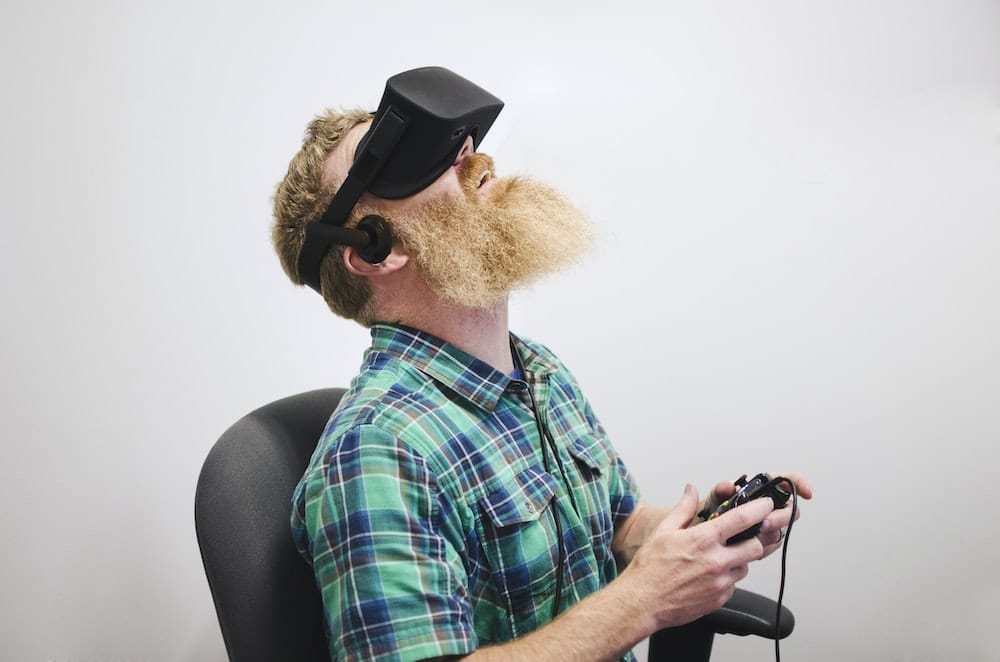How Can UK Small Businesses Use Augmented Reality for In-store Promotions?

The world of retail is constantly evolving, and businesses must keep up with the latest technologies to stay competitive. One such technology that’s making waves in the retail industry is augmented reality. As you venture into the brave new world of augmented reality in the retail sector, this article will guide you on how to leverage this technology for your in-store promotions.
What is Augmented Reality?
Before we delve into how you can utilize augmented reality, it’s crucial to understand what this technology entails. Unlike virtual reality that immerses users in a completely digital environment, augmented reality overlays digital elements onto the real world. This creates an immersive yet grounded experience that enhances how customers interact with products.
Have you seen this : What Tactics Can UK Real Estate Agents Use to Sell Properties Faster?
From trying on clothes virtually to visualizing how a piece of furniture would fit in a room, augmented reality is revolutionizing the shopping experience. It is not just about enhancing the user experience, but also about providing value to customers and giving businesses a competitive advantage.
Augmented Reality in Retail
The implementation of augmented reality in retail is not a new concept. Big brands like IKEA, Amazon, and Sephora have been using this technology for a while now. However, small businesses may feel that this advanced technology is out of their reach due to cost or development complications. But this is not the case.
This might interest you : How to Create Packaging That Stands Out in the Competitive UK Food Market?
The proliferation of smartphones and the development of augmented reality-enabled apps have made this technology more accessible than ever before. Whether it’s an ecommerce business looking to provide a more interactive online shopping experience or a physical store aiming to engage customers in innovative ways, augmented reality holds a plethora of opportunities.
How to Use Augmented Reality for In-Store Promotions
Augmented reality can breathe new life into your in-store promotions. It can be used to create immersive, engaging, and memorable experiences that stand out in today’s crowded marketplace. Here are some ways you can incorporate augmented reality into your in-store promotions.
Firstly, you can use augmented reality to provide detailed product demonstrations. Customers can use their smartphones to scan a product and receive a detailed breakdown of its features, how it’s used, and more. This reduces the need for sales staff to be on hand for every query and allows customers to explore products at their own pace.
Secondly, augmented reality can be used for digital signage. Instead of static posters, you can display dynamic, interactive content that entices customers to engage with your products. For instance, customers can scan a QR code on their phone, and the app will display a 3D model of the product, promotional videos, or even interactive games.
Finally, augmented reality can create immersive shopping experiences. Imagine customers walking into your store and being greeted by an augmented reality guide who takes them on a virtual tour of your store. This not only makes shopping a fun and memorable experience but also helps customers navigate your store easily.
Implementing Augmented Reality in Your Marketing Strategy
Incorporating augmented reality into your in-store promotions requires careful planning and execution. It’s not just about jumping on the latest technology bandwagon, but about aligning it with your marketing objectives and customer needs.
Begin by identifying what you want to achieve from your augmented reality campaign. This could be anything from increasing product awareness to boosting in-store footfall. Once you’ve defined your goals, you can work backward to develop an augmented reality experience that supports these objectives.
Next, consider your customers. How tech-savvy are they? Would they appreciate and engage with an augmented reality experience? Conducting customer surveys or focus groups can help you gauge their interest and willingness to use augmented reality.
Lastly, don’t forget to measure the success of your augmented reality campaign. Key performance indicators could include the number of app downloads, customer engagement levels, or increase in sales. This will help you to understand what’s working, what isn’t, and how to refine your approach moving forward.
Future of Augmented Reality in Retail
Augmented reality is not just a passing trend, but a technology that’s here to stay and will continue to shape the retail landscape. As technology improves and becomes more widespread, the possibilities for augmented reality in retail are vast.
In the future, we could see augmented reality being used to create personalized shopping experiences. For instance, customers could receive product recommendations based on their past purchases, or have access to real-time product reviews through their augmented reality app.
Moreover, as 5G technology becomes more prevalent, we can expect augmented reality experiences to become more seamless and immersive. This could lead to a blurring of the lines between the physical and digital retail spaces, where customers can enjoy the convenience of online shopping with the tangibility and immediacy of in-store shopping.
In conclusion, augmented reality offers a wealth of potential for small businesses in the UK to revolutionize their in-store promotions. By making shopping experiences more interactive, engaging, and personalized, augmented reality can help retailers stand out from the crowd and build stronger relationships with their customers. It’s time to embrace this technology and reap the rewards that it offers.
Augmented Reality and Customer Engagement
Customer engagement is an essential aspect of retail business, and augmented reality has the potential to take it to new heights. This technology can transform how customers interact with your products, leading to a more immersive and satisfying shopping experience. The key to this is creating augmented reality experiences that are not only entertaining but also add value to the customer’s shopping journey.
For instance, you could use augmented reality to create interactive product demos that allow customers to explore and understand your products in depth. This could involve letting them virtually try on clothes or see how a piece of furniture would look in their home. Such experiences not only engage customers but also help them make informed purchase decisions, thereby increasing their satisfaction and likelihood of making a purchase.
Augmented reality can also enhance your social media marketing campaigns. For example, you could create a filter that allows users to virtually try on your products and share the results with their followers. This not only increases your brand’s visibility but also leverages the power of social media to drive customer engagement.
Moreover, augmented reality can be used to gamify the shopping experience. This could involve creating a treasure hunt where customers have to find virtual items in your store, or a game where they have to build a virtual outfit with your products. Such games not only entertain customers but also incentivize them to explore your products and store.
Finally, augmented reality can create personalized shopping experiences. By analyzing past purchase data, you can create augmented reality experiences that are tailored to individual customers. This could involve showing them how a new product complements their previous purchases, or recommending products based on their preferences.
The Future of Augmented Reality Ecommerce
As more and more businesses adopt augmented reality, it’s expected that this technology will become an integral part of the retail industry. In fact, according to a report by Statista, it’s estimated that the augmented reality market will be worth over $198 billion by 2025. This indicates a promising future for augmented reality in ecommerce and retail business.
One of the key drivers of this growth is the increasing accessibility of augmented reality technology. With the rise of smartphones and augmented reality-enabled apps, more and more customers are getting familiar with this technology and are open to using it in their shopping experiences.
Another significant factor is the rise of 5G technology. With its high-speed and low-latency features, 5G can enhance the quality of augmented reality experiences, making them more seamless and immersive. This will not only improve customer engagement but also open up new possibilities for augmented reality in retail.
For instance, with 5G technology, customers could enjoy real-time augmented reality shopping experiences. They could virtually try on clothes and see how they look from different angles, or see how a piece of furniture fits in their room in real life. This will not only make online shopping more convenient but also bridge the gap between online and in-store shopping.
In addition, augmented reality could change how businesses conduct their marketing campaigns. Instead of relying on traditional advertising methods, they could use augmented reality to create immersive ads that engage customers and allow them to interact with the products.
Conclusion
In conclusion, augmented reality is not just a trendy technology but a powerful tool that can revolutionize the retail industry. From enhancing customer engagement to transforming marketing campaigns, augmented reality holds immense potential for small businesses in the UK.
However, to fully leverage the benefits of this technology, businesses need to be strategic and customer-focused. They need to create augmented reality experiences that add value to the customer’s shopping journey and align with their marketing objectives.
As technology advances and customer expectations evolve, businesses that embrace augmented reality will be better positioned to thrive in the competitive retail landscape. Hence, it’s high time for small businesses in the UK to embrace this technology and harness its potential for their in-store promotions.
